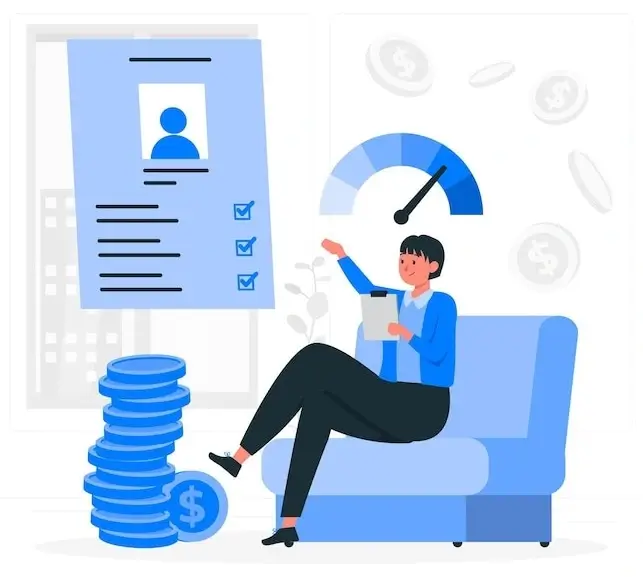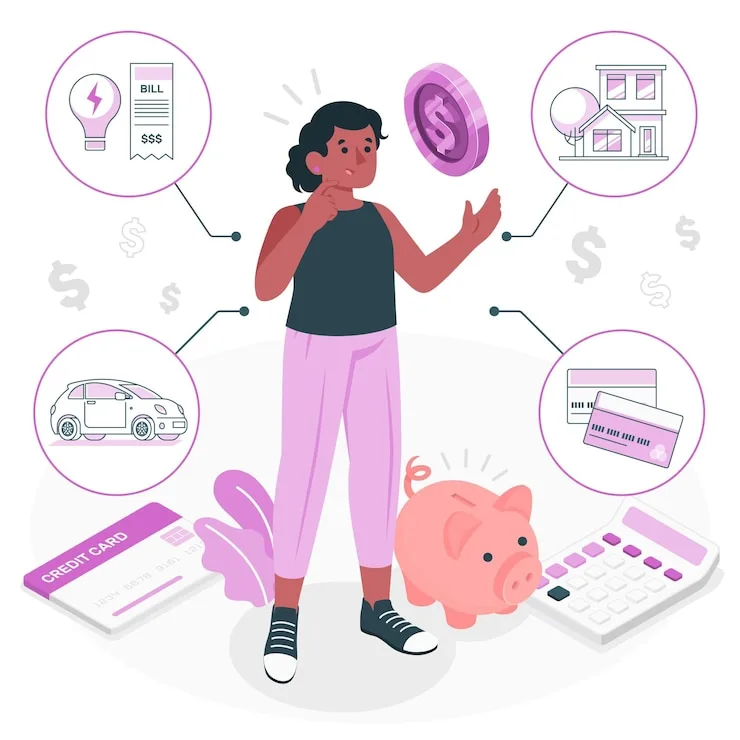5 Tips to Mitigate The Risks of Refinancing Your Personal Loan
When you refinance your personal loan, you are essentially taking out a new loan to replace your existing one. While this can be a great way to save money on interest or get a lower monthly payment, it’s important to understand the risks involved.
Refinancing a personal debt is nothing less than a financial maneuver that is meant to help you pay off your debt faster and reduce your interest expenses. But, you need to be smart enough to make the right choices before you refinance your personal loan.
If you do it right, it can cut down your costs, and help you achieve financial freedom. It can also allow you to manage your budget better. But, you need to choose the right lender and plan your finances well, before you make this move.
If you make this move without planning, you run the risk of losing more money. So, how can you mitigate the risks of refinancing your personal loan? Here are a few things to keep in mind:
1. Make Sure You Shop Around For The Best Rates
When you’re refinancing your personal loan, it’s important to shop around for the best rates. Just because you’re refinancing doesn’t mean you have to go with your current lender.
There are a few things to keep in mind when looking for a new lender: your current lender’s rate history, the lender’s fee structure, and the lender’s lending criteria.
- Your rate history is important because it can give you an idea of how likely it is for the lender to offer you a good rate. If the lender has a bad history of offering good rates, it might be worth considering a different lender. Your current lender may be offering you a lower interest rate than another lender, but that doesn’t mean you have to take it. Make sure you compare rates and terms before making a decision.
- Lender fees can be a pain in the neck, but they’re definitely worth considering if the lender you’re considering has a bad rate history. Lender fees can also help keep the rates you’re paying down.
- Lender criteria can also be important. For example, you might want to look for a lender that offers refinancing options that fit your needs. For example, you might want a lender that offers short-term refinancing options or refinancing options with low interest rates.
Keep these things in mind when shopping for a new lender and you’ll be sure to get the best possible rates for your personal loan refinancing.
2. Make Sure You Understand The Fees Involved

When you’re considering refinancing your personal loan, there are a few fees that you’ll want to be aware of.
- There may be fees associated with the refinancing itself. This includes origination fees, documentation fees, and underwriting fees.
- There may be fees associated with the loan itself. This includes fees for the rate you’re getting, fees for the type of loan you’re getting, and fees for the amount of the loan.
- Finally, there may be fees associated with the closing process. This includes fees for the mortgage broker you choose, fees for the attorney you choose, and fees for the title company you choose.
So be sure to ask about all of these fees upfront so that you’re well-informed about what’s involved and know exactly what you’re paying for. Keep track of the interest rates, the monthly payments, and the amount of time it will take to refinancing. This will help you stay informed and make the best decision for your situation.
3. Make sure you can afford the new payments
When you’re thinking about refinancing your personal loan, it’s important to remember that the new payments will likely be more expensive than the old ones.
To calculate the new monthly payment, first figure out your new loan amount. This will be the principal and the interest on your new loan, both of which will be substantially higher than the amount you were paying on your old loan.
Next, add the new interest rate to the new loan amount. This is the total amount you’ll be paying on your new loan, and it’ll be higher than the interest you were paying on your old loan because the interest rate on new loans is usually higher than on existing loans.
Finally, subtract the old monthly payment from the new interest rate. This will give you the new monthly payment you’ll be required to pay on your new loan. Make sure that this payment is something you can comfortably afford before refinancing.
By making sure you can comfortably afford the new payments, you’ll mitigate the risks of refinancing and ensure a smooth refinancing process.
4. Make sure you know why you’re refinancing
When you’re refinancing your personal loan, it’s important to remember why you’re doing it. Is it to save money on interest? Get a lower monthly payment? Make sure you have a clear goal in mind so you can make the best decision for your finances.

If you have a clear goal in mind, you’ll be better equipped to lower the risk of refinancing your personal loan. For example, if you know you want to save money on interest, you can compare interest rates and terms before making a decision. This will help you to get the best possible deal for your situation.
If you’re refinancing to get a lower monthly payment, it’s important to think about how long you’ll have the loan for and how much you’ll be paying each month. This will help you to calculate the total amount of interest you’ll be paying over the life of the loan.
If you’re refinancing to make sure you have a long-term loan, it’s important to think about your overall financial situation and how you can afford the loan payments. This will help you to calculate your loan-to-value (LTV) and determine whether refinancing is a good idea for you.
5. Make sure you understand the terms of the new loan
Before you sign anything, make sure you understand the terms of the new loan. by understanding the terms, you’ll be able to minimize the risks of refinancing your personal loan.

When refinancing your personal loan, there are a few things you’ll want to be aware of.
- Be sure to read the terms and conditions of the loan carefully. There are often terms and conditions that you may not have been aware of that could impact your ability to refinancing. For example, one common term is the “minimum loan amount.” This term is usually listed in the loan agreement as a minimum amount that you must have in order to refinance. If your loan amount falls below this minimum, the refinancing may not be available to you.
- Some important terms to be aware of include interest rate, term, and APR. Interest rate is the same as the original loan’s interest rate, but the term is the number of years the loan will be in effect. The longer the term, the higher the interest rate will be. APR is the annual percentage rate, which is the percentage of the total amount you will pay back each year.
- Be sure to read the fine print in the loan agreement. There may be terms and conditions that are specific to your particular situation that you may have missed.
By reading the terms of the loan, you can make sure that you understand what you’re signing up for and that you can minimize the risks associated with refinancing your personal loan.
Key Point to Read Before Refinancing Your Personal Loan…
Rising interest rates can have a devastating effect on your finances and your stress levels. But, if you’ve paid off a lot on your mortgage, you could benefit from refinancing.
How refinancing affects you will depend on your current financial situation.
If you recently landed a higher income, you could save a lot by refinancing. Reducing your interest rate can save you hundreds of dollars per month.
However, refinancing also carries risks, so it’s essential to do the math first.
While refinancing your home can be an advantageous move, you don’t want to fall into a debt cycle that you can’t get out of.
Sometimes, refinancing just doesn’t make sense. If you’re faced with rising payments for your mortgage, refinancing is one option.
However, if you still haven’t paid off your mortgage, refinancing may not be the best idea.
Rather than refinancing, it may be simpler to pay off debt.
Final Words!
Refinancing your personal loan can help you reduce interest rate on your debt, reduce your debt burden, and reduce your monthly payments. But, you need to do your research before you choose a lender, and you need to make a plan to pay off your debt faster, so that refinancing your personal debt doesn’t end up costing you more in the long run.



